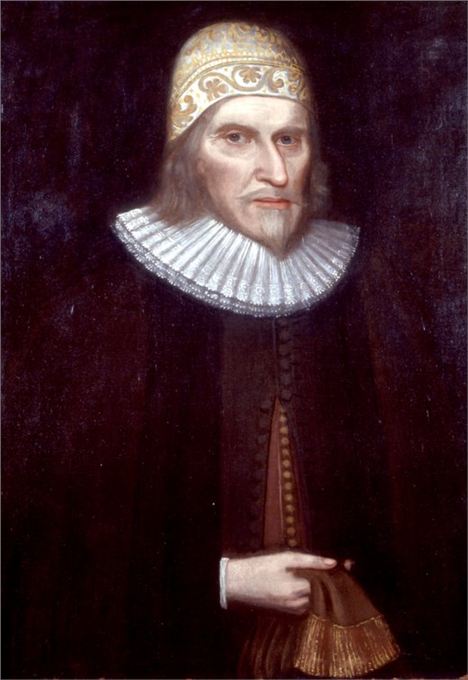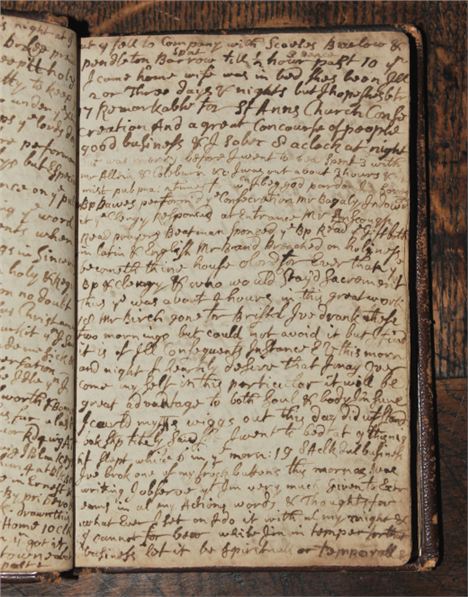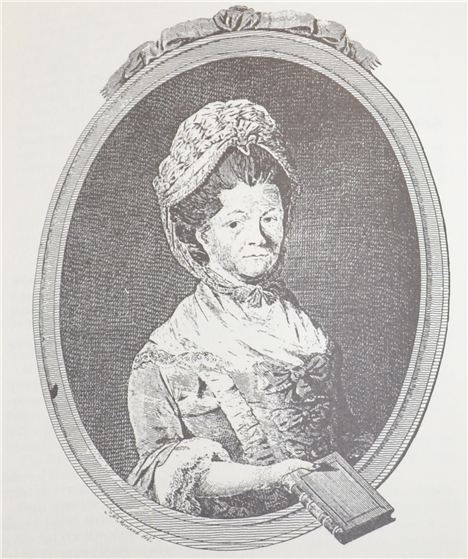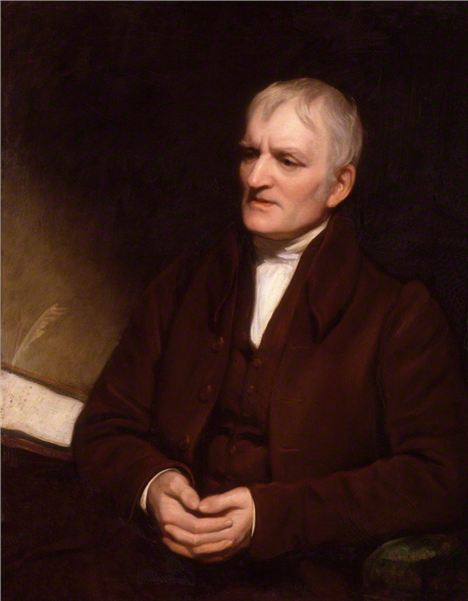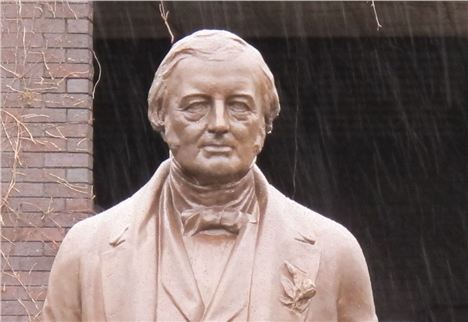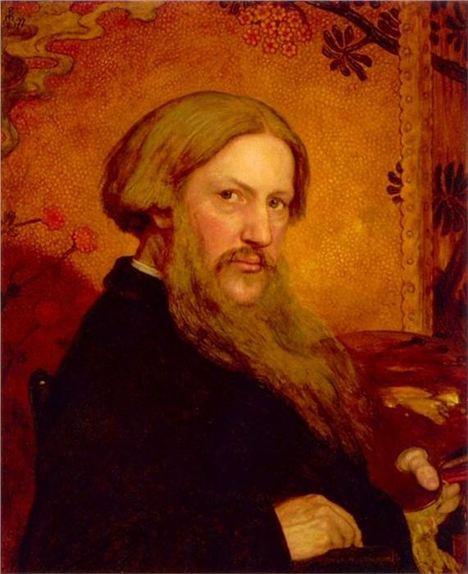THIS is part one of a series of articles composed of mini-biographies of people deeply associated with Manchester. They are presented chronologically from the date of birth, or assumed birth, of the person in question. The personalities are a mix of the great, the good and the curious.
While in Manchester working on the Town Hall murals Brown lived in a ménage a trois with his wife Emma Hill and German writer Mathilde Blind.
The mini-biogs are supposed to be a dip-in dip-out sort of article, so pace yourself. The larger part of the list here comes from Jonathan Schofield's new guidebook to the city Manchester: The Complete Guide, click here.
Of course, there are many people missing from this list, but this is only part one remember, so feel free to add suggestions for future inclusions in the comment boxes below. We'll publish part two of the illustrious Manchester dead in a couple of months time.
The First: Lucius Senecianus Martius (sometime 2nd Century AD)
Lucius Martius of the Sixth Legion Valeria Victrix, a Roman soldier, is the oldest named individual associated with Manchester. He set up an altar here to the Goddess of Fortune and then disappeared from our view. I think of him from time to time as I sit in some prosaic place, a tram, a coffeeshop. What did his eyes see, how did his brain interpret what he saw? We're all slaves to our culture and time so what were his feelings as he walked through an unpolluted landscape of birch, scrub oak, a River Irwell boiling with salmon, in a lonely outpost of humanity amidst wolves, bears, boar and lynx? Manchester was after all in one of the less populated areas of a sparsely populated island. I know he could never have imagined the industrial cataclysm history was preparing for this wild region in seventy generations, the shift into significance 1,600 years later. But Lucius is important because he has a name. An identity makes things concrete, gives us something to wrap our imagination around. It was the Romans who called their fort Mamucium (or something close), which became the name Manchester, which became a physical identity and an idea. I hope Lucius Martius enjoyed some good times here. I hope his Goddess came up trumps. Don't we all wish fortune to smile upon us? It's pleasant to think the human connection with Manchester starts with a small act of hope, of humanity, of Man.
Roman's Founding Manchester according to Ford Madox Brown's vision in Manchester Town Hall
The Philanthropist – Sir Humphrey Chetham (1580-1653)
Chetham was born at Crumpsall Hall and with his brother made a fortune as a money-lender and linen merchant. His wealth made him a target for Charles I who offered him a knighthood as long as he paid a compulsory fee. Chetham refused and was fined, but he was made High Sheriff of Lancashire and had to levy the unpopular ship-money tax which went straight to the King not Parliament. Despite this, during the English Civil War his Royal associations were forgiven and he became Parliament’s General Treasurer for the county. Already Chetham had proved himself a philanthropist and had ‘taken up and maintained’ 22 poor boys of the district. After this death he went further. His left money to buy the semi-derelict Warden’s College to house 40 poor boys of ‘honest, industrious, parents’ and provide Manchester with a free public library. The library remains, the school has become a school of music and Manchester retains some of the finest medieval secular buildings in the North of England - all in his name.
Humphrey Chetham
The Church Builder - Ann Bland (1664-1734)
Ann Bland, as the only child of Sir Edward Mosley, inherited the Mosley estates. She married Sir John Bland, a drinker and a gambler as she found to her cost, yet she was ‘a strong woman of great character and managed to hang on to her own fortune’. She also supported the Hanoverian succession (William of Orange, Queen Anne and then George I) and therefore wouldn’t worship at the Stuart Collegiate Church (now the Cathedral). She built St Ann’s Church, laying out St Ann’s Square in the process. The coincidence of her name, the Queen’s name at the time and the saint’s name was no accident, she wanted to be remembered. Ann Bland also introduced the ‘harmonising assembly’ as one account put it, was an art collector, imported a doll from Paris every year with the latest fashions and frequently wore orange as a political gesture and as a snub to her rival Madame Drake who would wear Stuart tartan (and also smoked a pipe and refused to drink tea preferring beer). Ann Bland is buried in St James’ Church, Didsbury.
St Ann's Church
The Diarist - Edmund Harrold (late 1600s-1721)
Harrold was a Manchester peruke maker or wigmaker, and a dealer in books through which he made extra money. Best of all he was a diarist and between 1 June 1712 and 24 June 1716 his diary has survived giving us a gloriously human insight into Manchester life three centuries ago. In the diary held at Chetham’s library he describes death, recreation, drinking and reading. A religious man he desperately wanted to give up drink but failed time and time again, tempted to ‘ramble’ as he called a pub crawl at every opportunity. For example: ‘This morn I had my old melancholy pain seized on me with a longing desire for drink. So I went & paid my rent yn I sold J.G. a lock of hair pro Loss 5s 6d; yn I spent 2d with Hall etc; yn 4d with Mr Allen Tourney; yn fought with S.B. at Janewins about a hat; yn went to ye [Hanging] Ditch a Rambl, - Keys, Dragon & Castle, and Lyon till near 12 clk, till I was Ill drunken; cost me 4s from 6-12. I made myself a great foole’. But it isn’t all grim. Other entries include: ‘Came at ten, went to bed, did wife old fashion, yn fell asleep’ or ‘Spent 4d, came at quarter past ten, did wife old fashion’ or ‘Did wife after a scolding bout: now we are friends’. Never sleep on a fight they tell couples - but what was ‘old’ and ‘new’ fashion remains a mystery.
Edmund Harrold's Diary
The Cook - Elizabeth Raffald (1733-1781)
Good eating has a good pedigree in Manchester. In 1769 local superwoman Elizabeth Raffald published The Experienced English Housekeeper, which ran to 13 editions and was pirated 21 times. It was the first mass popular cookbook in English with full recipes and menu recommendations. The suggested second course of a grand dinner consisted of ‘roast hare, transparent pudding covered with a silver web, snowballs, moonshine, rocky island and burned cream, mince pies, creerant with hot pippins, crawfish in a savoury jelly, snipes in ditto, pickled smelts, marbled veal, collared pig and potted lamprey, vegetables, stewed cardoons, pompadour cream, macaroni, stewed mushrooms and dessert’. During her time in Manchester, Elizabeth ran a shop, a domestic servants’ employment agency, an inside and outside catering business and two pubs. She also wrote the first Manchester Street Directory, the first best-selling English cookbook and in her last years assisted Dr White with his book on midwifery. And for the final twist: in the 18 years Elizabeth Raffald lived in Manchester, it is said she had 16 children. It’s said she died of exhaustion. It's said no one was surprised.
Elizabeth Raffald
The Thinker - John Dalton (1766-1844)
Of all the dead people featured on these pages you can still see part of John Dalton. His eyes were preserved after death and currently reside in the Museum of Science and Industry. Dalton had, after all, been the first to describe colour blindness so this seemed apt. Dalton was from Eaglesfield in Cumbria from an impoverished background but spotted early as gifted. He settled in Faulkner Street, Manchester, presently Chinatown, taught maths privately, but also developed through his study of gas his acclaimed atomic theory. As one authority has written: ‘By finding a way to ‘weigh atoms’, John Dalton's research not only changed the face of chemistry but also initiated its progression into a modern science’. A bachelor, gruff in this lectures, his recreation was an annual trip to his native Lake District or a walk every Thursday to the Dog and Partridge in Old Trafford, almost 3 miles south west, for a game of bowls. He recorded the weather every day and studied meteorology so the choice was no coincidence. Prevailing winds blew the fumes of smoky Manchester to the north east. He was a national and local hero when he died. A celebrity. 40,000 people viewed his body in the old Town Hall. His cortege was more than 100 carriages strong, factories and shops closed, there were more than 100,000 people lining the streets.
John Dalton
The MP - Joseph Brotherton (1783-1857)
A cotton manufacturer and Salford’s first MP from 1832, Brotherton campaigned against child labour and for improved working conditions in factories. He was a man who also wanted a better quality of life for working people promoting with great energy the creation of public parks, museums and libraries. He was a pro-Parliamentary reform, anti-war, champion of anti-slavery in first the British Empire and then in the USA, and he considered the death penalty barbaric, campaigning vigorously for its abolition. He also argued eloquently the case for free non-denominational education without the chains of religious dogma. He was by conscience a vegetarian, a member of Salford’s small but significant Bible Christian Church. His wife Martha wrote the first widely used vegetarian cookbook from 1812. Matthew Noble’s statue in Salford touchingly shows him with a flower in his lapel. Brotherton wore a fresh flower every day as a symbol of his belief in the potential of his fellow Man, the beauty of Nature and a reminder that life passes swiftly. He died on a bus passing swiftly into Manchester from his Salford home in 1857.
Joseph Brotherton statue, New Bailey Street, Salford
The Editor - John Edward Taylor (1791-1844)
Born in Somerset in 1791, Taylor moved to Manchester as a young man and became a journalist on the liberal Manchester Gazette. At the Peterloo Massacre in 1819, Taylor discovered the only reporter present from a national newspaper had been arrested and imprisoned and so began interviewing eyewitnesses. His report of the tragedy appeared in The Times two days later. The launch of his own newspaper came about in an unlikely fashion. Tried for libel in Lancaster in 1819, Taylor took the extraordinary step of justifying rather than denying his statements. The jury was divided 11 to one, but the dissenter stood firm and eventually persuaded the other jurors to change their minds. A group of like-minded Mancunians were so impressed with this success that they financed Taylor’s own paper, the Manchester Guardian. The prospectus promised it would enforce the principles of civil and religious liberty. Taylor remained the editor until his death. The Manchester Guardian became the Guardian in the 1960s when it moved to London. It shamefully cut its ties to the region when it sold the Manchester Evening News to Trinity Mirror in 2010.
John Edward Taylor
The Campaigner - Richard Cobden (1804-1865)
Every city needs a Cobden. Born in Sussex, raised in Yorkshire, he came to Manchester to sell and print cotton goods but found politics and the pursuit of injustice far more appealing. This meant he was in financial trouble all his life and had to be maintained by an appreciative group of friends and supporters. The support was handy as he had a wife and five daughters to look after. In Manchester he engineered the Charter of Incorporation which gave the city its first modern council, he supported a national system of secular education, campaigned against the Opium Wars, was generally a peace campaigner but perhaps is best known for his association with John Bright MP from Rochdale with whom he led the Anti-Corn Law League to batter down the unjust protectionism of establishment and the land-owning classes. Still with John Bright he then led the Manchester-based Free Trade Movement. Famous words of Cobden include: ‘At all events arbitration is more just, rational and humane than resort to the sword’ and ‘For every credibility gap, there is a gullibility gap’. When he died, his great friend John Bright called him ‘the manliest and gentlest spirit that ever quit or tenanted a human form’.
Richard Cobden
The Novelist - Elizabeth Gaskell (1810-1865)
Elizabeth Gaskell believed in equal education for men and women, equality of opportunity for all classes and tolerance of others. She utterly rejected the 'seen but not heard' attitude to children. She was orphaned in London at 18 months and brought up in Knutsford by her aunt – an experience underpinning the novel Cranford. In 1832 she married William Gaskell, the minister of the Unitarian Cross Street Chapel in Manchester. It was a very happy marriage during which Elizabeth became well-known as a writer, novelist, mother and traveller. She was already a published writer before her novels, but the death of an infant son, threw her into despair. It's said, to take her mind off the pain, her husband encouraged her to write her first novel, Mary Barton. Elizabeth was clear about her objective from the start. She wanted to show the ‘other Manchester’, the other Britain, ignored in the salons of polite society, she wanted to understand the effects the new industrial society was having on the urban poor and how that affected relationships between them and the middle classes. For a middle class woman of the mid-nineteenth century to touch on subjects such as crime, poverty and prostitution was courageous, even provocative. In her novels, there’s often a returning son, a poignant nod to her dead infant lad, whose death lay behind that first novel. She died suddenly of a heart attack leaving a devastated husband, four daughters and classic works such as North and South, Ruth and the Life of Charlotte Bronte. Her house, which became the centre of Manchester cultural life, is open to the public.
Elizabeth Gaskell
The Outsider: Ford Madox Brown (1821-1893)
Ford Madox Brown was always an outsider, a Pre-Raphaelite by nature but never a paid up member. Tutored abroad, often in financial trouble, anti-art establishment, prickly, resentful, an innovator, amusing, handsome (known as 'the King of Hearts'), he is one of the UK's more interesting artists. While in Manchester working on the Town Hall murals he lived in a ménage a trois with his wife Emma Hill and German writer Mathilde Blind. Politically a radical he helped found a labour exchange to help unemployed workers. Ford Madox Brown did eyes better than any other artist of the Pre-Raphaelite period. Especially those of children. In his vision they seem the wisest creatures of all. In among the forty plus characters in Brown’s masterpiece Work, in Manchester Art Gallery, the central figure is the noble navvy showing the value of morally good work, in this case physical, as opposed to the morally good mental work of the philosophers off to one side. But in the centre of the picture a baby, from a broken family and with a troubled present, according to Brown's own notes, stares straight back at the viewer so frankly you feel almost judged, challenged. The baby is us. Us: waiting for it all to happen, to go right or wrong, to end up somewhere or nowhere. Children were after all, as with so many Victorians, Brown's tragedy. All his three sons, died young. Two daughters survived him. When his beloved son Oliver, on the brink of personal success, succumbed aged nineteen, Brown fell into one of his many deep depressions - he called them his 'mulligrubs'. As Angela Thirlwell memorably writes, 'After Oliver's death, he (Brown) would stare into desolation.'
The eyes have it
Ford Madox Brown, beard pioneer
The Communist - Friedrich Engels (1820-1895)
Friedrich Engels, a German, lived for almost 22 years in Manchester between 1842 and 1870. He came as an agent for a textile company in which his father had a partnership. Although he loathed the job it allowed him to examine how Manchester had developed. It came to represent for him the perfect capitalist city with all the contradictions and problems that entailed. Touring the city with common-law wife Mary Burns, a working class girl with access to the roughest areas, he compiled material for his famous work The Condition of the Working Class in England. This influenced all subsequent thought on industrialisation, in particular the work of Engels’ close friend Karl Marx. The following is an extract: ‘Society in England daily and hourly commits what the working-men's organs, with perfect correctness, characterise as social murder, it has placed the workers under conditions in which they can neither retain health nor live long; and so hurries them to the grave’. Marx would visit Engels for weeks on end. In Chetham’s Library there’s a record of their visit in 1845. It’s thought they wrote part of The Communist Manifesto in the city. However Engels was not just a social reformer in a sober suit, in character he was warm and approachable. He loved sport, and used to attend a fox hunt in nearby Cheshire and was a prolific pub-goer and club member.
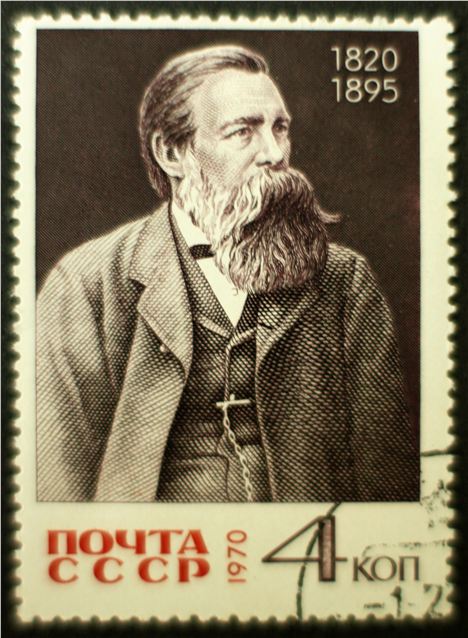 Soviet Stamp Of Friedrich Engels
Soviet Stamp Of Friedrich Engels
You can follow Jonathan Schofield on Twitter @JonathSchofield or connect via Google+










